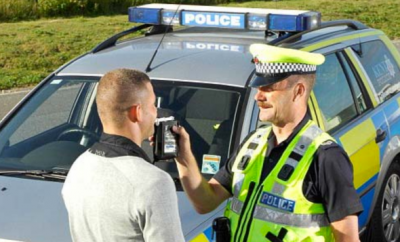What is BAC?
Tuesday, May 10, 2022

What is BAC?
How is BAC measured?
How can BAC affect your body?
BAC level effects
The number of drinks above represents the approximate amount of alcohol that a man weighing eleven and a half stone would need to drink in one hour to reach the listed BAC in each category. A standard alcoholic drink is a 330ml bottle of beer (ABV 5%) or 125ml glass of wine (ABV 12%). If you’d like to try and cut down your consumption, read our article on how to reduce alcohol.
| BAC level | Standard alcoholic drinks | Typical general effects | Likely effects on driving |
| 0.2‰ BAC | Two | Some loss of judgement, relaxation, slight body warmth, altered mood | Decline in visual functions (rapid tracking of moving target) and ability to perform two tasks at the same time (divided attention) |
| 0.5‰ BAC | Three | Exaggerated behaviour, loss of small-muscle control (e.g. focusing eyes), impaired judgement, lowered alertness, release of inhibition | Reduced coordination, reduced ability to track moving objects, difficulty steering, reduced response to emergency driving situations |
| 0.8‰ BAC | Four | Poor muscle coordination (e.g. balance, speech, vision, reaction time, hearing), difficulty detecting danger, impaired judgement, self-control, reasoning and memory | Loss of concentration, short-term memory loss, impaired speed control, reduced information processing capability (e.g. signal detection, visual search), impaired perception |
| 1.0‰ BAC | Five | Clear deterioration of reaction time and control, slurred speech, poor coordination, slowed thinking | All of the above plus reduced ability to maintain lane position and brake appropriately |
| 1.5‰ BAC | Seven | Far less muscle control than normal, potential for vomiting, major loss of balance | All of the above and substantial impairment in vehicle control, attention to driving task, and visual and auditory processing |
The number of drinks above represents the approximate amount of alcohol that a man weighing eleven and a half stone would need to drink in one hour to reach the listed BAC in each category. A standard alcoholic drink is a 330ml bottle of beer (ABV 5%) or 125ml glass of wine (ABV 12%). If you’d like to try and cut down your consumption, read our article on how to reduce alcohol.


















